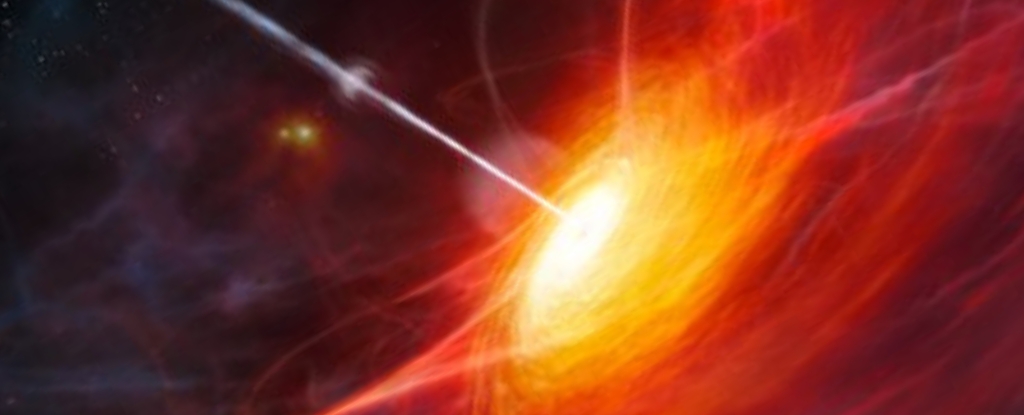
Recent observations have revealed a dramatic reduction in the mass of the universe’s brightest quasar, known as PG 1302-102, which has decreased by an astonishing 90%. This significant change is attributed to a powerful outflow of material, a phenomenon that challenges existing theories about quasar behavior and formation.
The research, conducted by astronomers from the University of California, Berkeley, utilized data from the Hubble Space Telescope and other instruments to analyze the quasar’s mass, originally estimated at approximately 10 billion solar masses. The findings suggest that such outflows can have profound effects on the mass and evolution of quasars, which are among the most luminous objects in the universe.
Understanding the Outflow’s Impact
Quasars are powered by supermassive black holes at their centers, drawing in vast amounts of surrounding gas and dust. The recent study indicates that the outflow, driven by intense radiation from the quasar itself, is expelling material away from the black hole. This process not only reduces the mass of the quasar but also influences its surrounding environment, potentially affecting galaxy formation.
The results of this study were published on March 15, 2024, and have sparked discussions within the astrophysics community regarding the implications for quasar evolution. Dr. Xiaohui Fan, an astronomer involved in the research, emphasized the importance of these findings, stating, “The ability to observe such a dramatic outflow reshapes our understanding of how quasars evolve and interact with their host galaxies.”
Challenging Existing Theories
Traditionally, it has been understood that quasars build mass over time by accumulating material. However, the discovery that a quasar can lose a substantial portion of its mass challenges this narrative. Scientists are now reevaluating existing models to incorporate the effects of outflows, which may play a more crucial role than previously believed.
This revelation comes at a time when astronomers are increasingly focused on unraveling the complexities of cosmic structures. According to NASA, understanding quasars like PG 1302-102 is essential, as they serve as beacons for studying the early universe and the formation of galaxies.
The study’s findings add a new layer of complexity to the already intricate field of astrophysics, illustrating how dynamic and interconnected the universe truly is. As researchers continue to examine these cosmic phenomena, the implications for our understanding of the universe’s history will likely unfold in the years to come.






